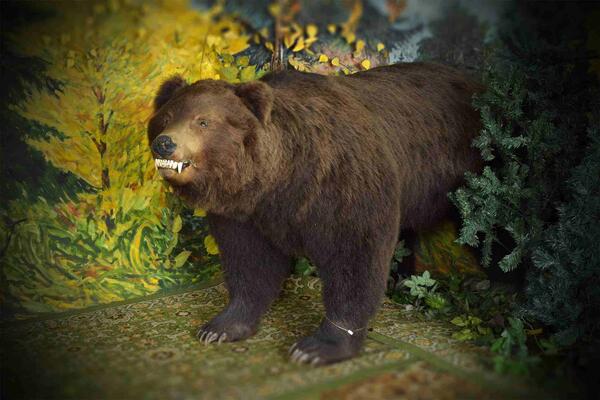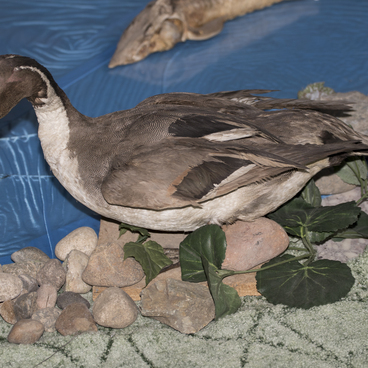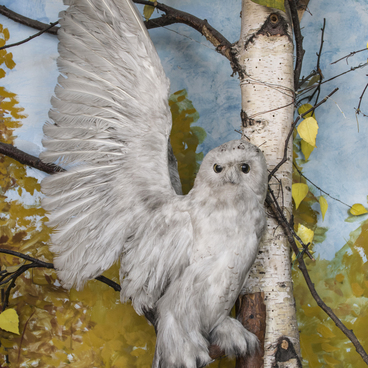The Siberian brown bear is a huge predator, which is two and a half meters long and 1.5 meters tall. The adult animal weighs almost half a ton. Nowadays, one can still encounter bears that each weigh up to 750 kg. When these giants stand on their hind legs, they are up to 3 meters tall. Brown bears from the Far East, the Kamchatka Peninsula, and particularly from Alaska and the islands of the Kodiak Archipelago are especially large. In the middle of European Russia, one can most often come across animals that weigh 80 to 120 kilograms.
Colors of brown bears’ coats are surprisingly varied. They differ not only in different parts of its natural habitat but also within specific regions. Aside from animals with typical dark chestnut coats, there are also those with almost black as well as light straw-colored ones.
The Siberian brown bear is exceptionally strong, the adult does not have any natural enemies and has every right to the title of the king of taiga. It has a large thick body, a sizable head with a huge mouth, big teeth and strong paws with claws. With one swap of its paw, the animal can easily kill its prey. Despite its clumsy appearance, the Siberian brown bear can be very agile if so required. It can jump, climb trees and swim. In spite of this animal’s considerable size, it can run with a speed of up to 60 km/h.
Although the Siberian brown bear is viewed as a predator, it is, in fact, an omnivore. The mammal eats plants, berries and mushrooms, and also hunts small animals, such as mice, marmots, Spermophile and chipmunks. It can also catch an unsuspecting bird. In addition, these animals hunt large prey, i.e. roe deer, elks and moose, boars and reindeer. When hungry, they can also attack domestic cattle. Siberian brown bears love sweet food. They often take honey from hives of wild bees in tree hollows. And if the animal ends up in an apiary, it simply breaks the hives to get to the honey.
Fish account for a significant portion of the food consumed by Siberian brown bears. Hence, these animals gather at river rapids, where fish jump out of the water to move through such sections, where they then nimbly catch their prey. From October to March, Siberian brown bears hibernate, thus beforehand, they find or make dens in remote and hard to reach places, i.e. among fallen trees, in brushwood, under the roots of trees or in natural caves. The animal brings branches and grass there, thus creating a fairly warm resting place, and then blocks the entrance to it. Such dens are usually used for a number of winters. Bears that wake up from their slumber early are said to suffer from partial bearish insomnia. In Russian, these animals are called ‘shatuns’. They are very hungry and pounce on any living creature. Shatuns can also easily attack humans. Siberian brown bears inhabit most of Siberia, from the Yenisey river to the region east and south of lake Baikal and to the Stanovoy Range, and areas along Lena and Kolyma rivers as well as Yakutiya. They also live in Altai, northern Mongolia, East Kazakhstan Region and even northern parts of China. At present, there are approximately 80,000 of these animals in the wild.
Colors of brown bears’ coats are surprisingly varied. They differ not only in different parts of its natural habitat but also within specific regions. Aside from animals with typical dark chestnut coats, there are also those with almost black as well as light straw-colored ones.
The Siberian brown bear is exceptionally strong, the adult does not have any natural enemies and has every right to the title of the king of taiga. It has a large thick body, a sizable head with a huge mouth, big teeth and strong paws with claws. With one swap of its paw, the animal can easily kill its prey. Despite its clumsy appearance, the Siberian brown bear can be very agile if so required. It can jump, climb trees and swim. In spite of this animal’s considerable size, it can run with a speed of up to 60 km/h.
Although the Siberian brown bear is viewed as a predator, it is, in fact, an omnivore. The mammal eats plants, berries and mushrooms, and also hunts small animals, such as mice, marmots, Spermophile and chipmunks. It can also catch an unsuspecting bird. In addition, these animals hunt large prey, i.e. roe deer, elks and moose, boars and reindeer. When hungry, they can also attack domestic cattle. Siberian brown bears love sweet food. They often take honey from hives of wild bees in tree hollows. And if the animal ends up in an apiary, it simply breaks the hives to get to the honey.
Fish account for a significant portion of the food consumed by Siberian brown bears. Hence, these animals gather at river rapids, where fish jump out of the water to move through such sections, where they then nimbly catch their prey. From October to March, Siberian brown bears hibernate, thus beforehand, they find or make dens in remote and hard to reach places, i.e. among fallen trees, in brushwood, under the roots of trees or in natural caves. The animal brings branches and grass there, thus creating a fairly warm resting place, and then blocks the entrance to it. Such dens are usually used for a number of winters. Bears that wake up from their slumber early are said to suffer from partial bearish insomnia. In Russian, these animals are called ‘shatuns’. They are very hungry and pounce on any living creature. Shatuns can also easily attack humans. Siberian brown bears inhabit most of Siberia, from the Yenisey river to the region east and south of lake Baikal and to the Stanovoy Range, and areas along Lena and Kolyma rivers as well as Yakutiya. They also live in Altai, northern Mongolia, East Kazakhstan Region and even northern parts of China. At present, there are approximately 80,000 of these animals in the wild.



